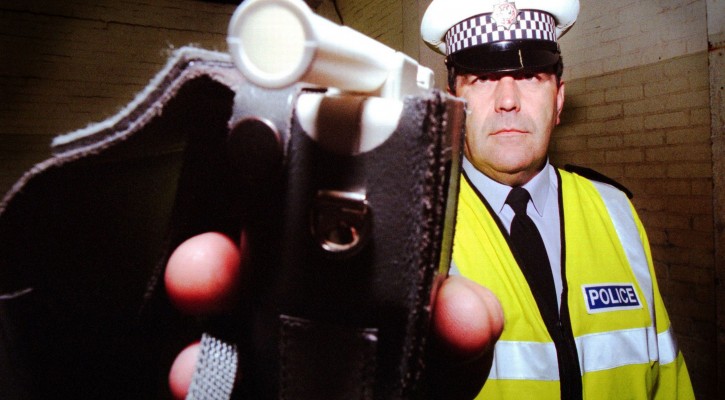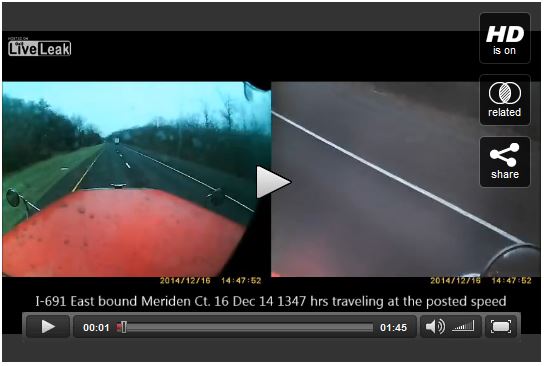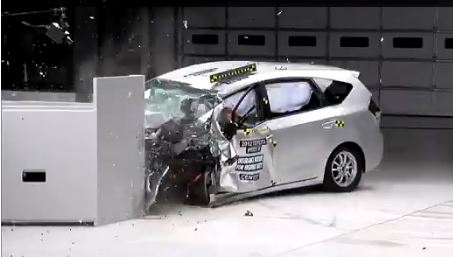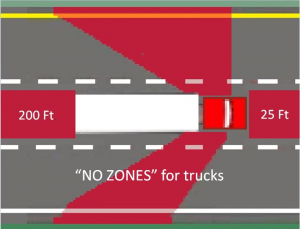
DUI Limit Lowered By Scotland and Lithuania
January 23, 2015
The DUI limit has been lowered in Scotland and Lithuania in conformance with the DUI laws in most of the rest of western Europe. Scotland lowered its DUI limit from .08 down to .05. Lithuania, which already had a general DUI limit of .04, lowered its DUI limit down to .02 for novice and commercial drivers.
A lot of Americans view Europe as having a lax attitude toward alcohol and that may be the case in certain countries but when it comes to drinking and driving, Europe has a low tolerance level. In fact, some of the old Eastern Bloc nations, including Russia, have a DUI limit of .00 or .01.
Most of the western European nations have long since adopted a DUI limit of .05. When Switzerland lowered its DUI limits from .08 to .05 in 2005, they experienced a 44% drop in alcohol related highway deaths. England and Wales remain the only western European nations with a DUI limit of .08 and their governments are being pressured to lower their DUI limits to at least .05.
Many safety advocates in the US are calling for a lower DUI limit to at least .05. Studies have shown that a driver’s abilities can be affected by just one drink. Safe driving advocates in the US have long been spreading the word that “buzzed driving is impaired driving.”
Even with the US DUI limit of .08, many drivers are surprised to learn that they can still be arrested for DUI with a lower limit if field sobriety tests show that their abilities are impaired.

Ants Can Do It, Why Can’t We?
January 20, 2015
Ants, even when moving in large swarms seem to handle traffic, prevent traffic jams, and keep traffic flowing smoothly much better than humans can.
Physicist Apoorva Nagar at the Indian Institute of Space Science and Technology working on previous work by a group of German and Indian scientists has written a soon to be published paper on this phenomenon. The German and Indian scientist’s work showed that ants traveling in a line were able to move steadily and at a constant speed without bunching up. Nagar was able to show mathematically why large groups of ants seem to be able to move so steadily without causing a traffic jam.
According to Nagar, the reasons ants don’t jam up are:
- They don’t have egos; they don’t feel the need to pass everyone else.
- If there is a blockage, they don’t stop to rubberneck; they just keep moving steadily around the blockage.
- They seem to become more disciplined when the path narrows; they move in a straighter line and vary their speed less.
These are basic concepts in traffic flow management that many humans seem incapable of grasping. It’s hard to convince drivers that maintaining a longer following distance and traveling at a steady speed, even if that means going slower than the speed limit, will keep traffic moving smoothly and actually get them to their destination faster. It’s for this reason that advocates of self driving cars are hoping that, when the cars take over driving, traffic jams will be a thing of the past.
We have written on this issue before and have posted videos that explain why traffic jams occur and how to avoid them but they bear repeating.
Read more: Why Ants Handle Traffic Better Than You Do
Traffic Jam without bottleneck – experimental evidence
Traffic Waves
How To Handle A Traffic Stop
January 9, 2015
For cops, there’s no such thing as a routine traffic stop. For Albuquerque (NM) Police Officer Lou Golson, this traffic stop started out like a thousand other traffic stops but, as the video above shows, this stop was anything but routine.
As a traffic school instructor I’ve heard a lot of complaints about the conduct of police officers during traffic stops but, from the perspective of law enforcement officers, they never know how the situation may turn out and they must always be on guard during a traffic stop. As the person who’s being stopped, you may be angry but the police officer is understandably fearful. When a driver who has been stopped is belligerent or argumentative, the officer on the scene is going to reply in kind.
It’s important for the driver who has been stopped to think about what’s happening from the perspective of the police officer. If a police officer is directing you to pull over, signal for a turn to the right, then move over to the right side of the road and pull over in a way that gives you plenty of clearance between you and the traffic on the road. Pulling far to the right is both for your safety and the safety of the officer.
It’s common for a driver who’s been pulled over to immediately start reaching for their driver’s license or to look in the glove compartment for their vehicle registration. The police officer who sees this activity doesn’t know if you are reaching for your registration or a gun. He or she will be automatically on guard. Once you’ve pulled over, roll down your window and place your hands in clear view on the steering wheel. Don’t try to reach for anything until you’ve been directed to by the officer.
Always wait for and follow the officers directions. When the officer asks for your license and registration, let the officer know that you’ll need to reach for your wallet, purse, or into the glove compartment to get it. You’re nervous but he’s even more nervous; don’t make any quick movements. Communicating openly with the officer will make everything go much more smoothly.
Don’t try to argue with the officer or offer excuses; he or she has already heard them all. The officer often has discretion to issue a warning or give a ticket for a lesser offense; the more cooperative you are, the better the chance that the officer will exercise that discretion.
Another danger involved in a traffic stop is failure of other drivers to obey the “Move Over Law”. If the officer asks you to step out of the vehicle, follow the officer’s directions about where to go and stand. The video below shows why you shouldn’t stand close to the roadway or between the vehicles.

Respect The Truck!
January 7, 2015
Impatient drivers who don’t respect the truck and stay out of a truck’s “no zones” generally come out on the losing end.
A trucker posted the video above on Liveleak.com of a driver who failed to give clear space between her and the truck before pulling in front of the truck. As you can see in the video, things didn’t go well for the driver of the car. Fortunately, the driver of this car received only minor injuries but she still had to be transported to a hospital. It could have gone much worse for her.
“No zones” refer to the space around a truck that the trucker can’t see and that drivers should remain clear of. A large truck can weigh up to 80,000 pounds and there is no possible way that a vehicle weighing that much, traveling at highway speeds, can stop quickly.
When passing a truck, drivers should follow the rule that says “If you can’t see the drivers face in his rearview mirror, he can’t see you.” After passing, drivers who want to pull in front of a truck should wait until they can see both of the truck’s headlights in their center rearview mirror before moving into the lane ahead of the truck. Using that guide should give you enough clear space ahead of the truck to avoid danger.
Drivers need to respect the truck and realize that the truck doesn’t have the same maneuvering or stopping abilities as a small car. If they expect the truck to be able to stop quickly, or maneuver to avoid a crash, they’re going to be disappointed. In more than 70 percent of crashes involving cars and trucks, the car driver is at fault.


